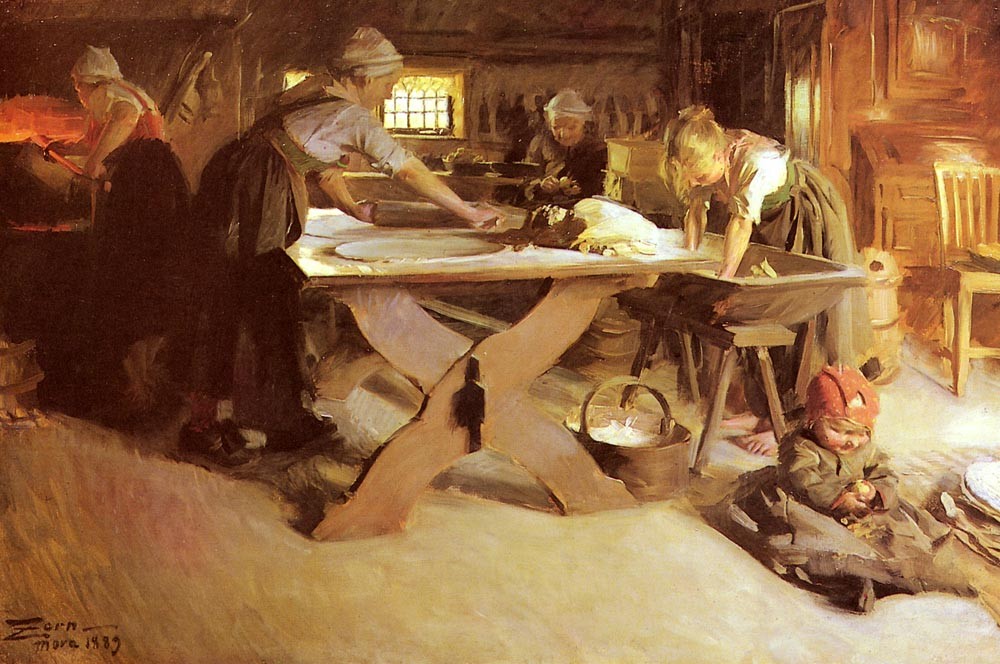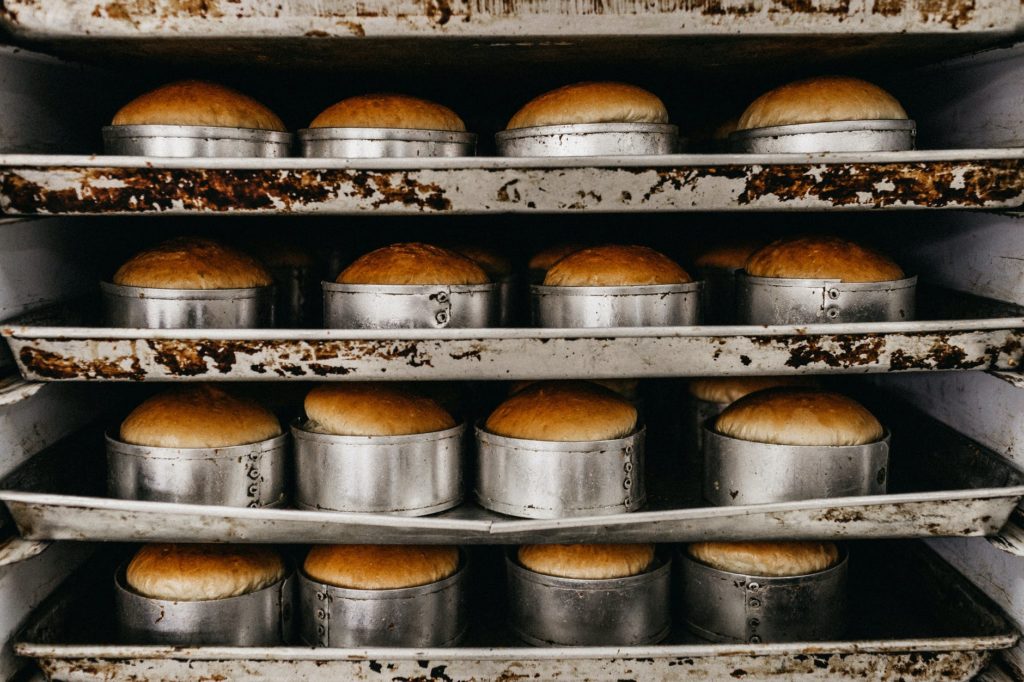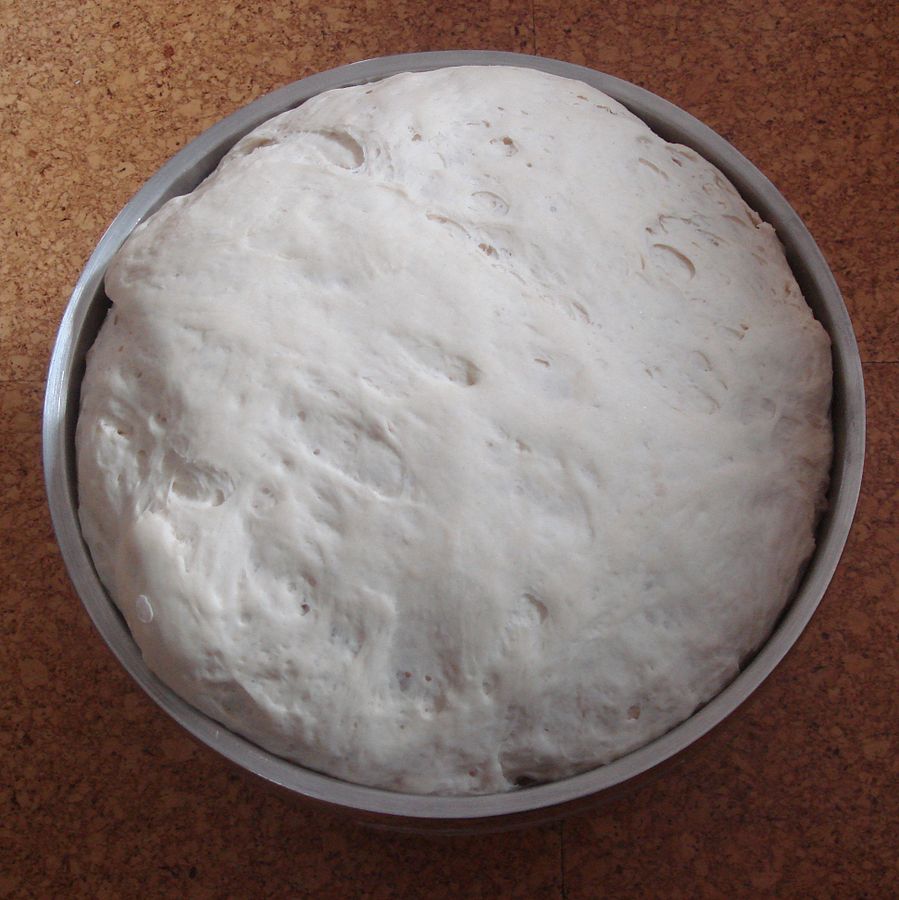
Bread is already pretty awesome, but there’s something extra awesome about bread that’s homemade. We’re glad there’s a day that celebrates it (every Nov. 17 in case you’re marking your carb calendars) and gives us an excuse to explore our favorite baking lingo.
panification

“It is to the gluten of flour that its property of panification, or bread-making, is due.”
Charles Alexander Cameron, The Stock-Feeder’s Manual: The Chemistry of Food in Relation to the Breeding and Feeding of Live Stock, 1868
If you want to get formal, you can call breadmaking panification. The word is a borrowing from French, says the Oxford English Dictionary (OED), and first appeared in English in 1781. It ultimately comes from the Latin word panis, which means “bread.”
bake-off

“In a grand final bake-off at the Waldorf-Astoria, Pillsbury Mills will award $150,000 in prizes.”
Sheboygan (Wisconsin) Press, Dec. 1, 1949
The above is the earliest citation of bake-off, a cooking competition, according to the OED. It comes from cook-off, which originated in the 1930s. Bake-offs and cook-offs usually involve amateur competitors.
batch

“In the last grueling months of the election, I’d retreat from the political chaos to the sanctuary of my kitchen, where I’d bake batch after batch of muffins.”
Jean Fain, “To Relieve Post-Election Stress, Bake And Bake Again,” NPR, Nov. 18, 2016
A batch is a quantity produced from one baking and probably comes from the Old English word meaning “to bake.” In fact the original meaning of batch is the process of baking, according to the OED.
proof

“Proofing is a term used by serious bread bakers. It’s the final stage before baking, when the bread dough is left to rise.”
Ellie Walker-Arnott, “‘The Great British Bake Off’ glossary: from crème pat to soggy bottoms,” Time Out London, Aug. 25, 2016
The proof is in the rising. To proof one’s dough is to aerate it or let it rise by some yeast action before baking. This sense of proof first appeared in English in 1875, says the OED.
windowpane test
“The windowpane test is one good indicator for whether your dough is ready to become warm, delicious bread.”
Stephanie Lee, “Use the Windowpane Test to Tell If Your Dough Is Properly Kneaded,” Lifehacker, Dec. 15, 2016
To perform the windowpane test, you’ll want to pull a window, that is take a small ball of dough and “pull into a thin, see-through membrane without it tearing.”
dunch
“His improperly baked bread is dunch.”
Casual Essays of the Sun, 1905
Dunch is an old term that describes bread that hasn’t risen or wasn’t baked properly. Also the bread itself, dunch was a regional term used in southern England and later in Newfoundland, says the OED. The earliest recorded usage is in dunch dumpling, “a plain, hard dumpling made of flour and water.”
kissingcrust
“They are also baked so they touch each other, forming a kissing crust.”
Fraser Wright, “The history of morning rolls, including a recipe for making your own,” March 24, 2016
Another old-timey term, kissingcrust refers to “an overhanging edge of the upper crust of a loaf, that touches another loaf while baking.” The OED calls it “farmer slang” and says it’s from about 1708.
Craving more bread more? Check out this list as well as this one.